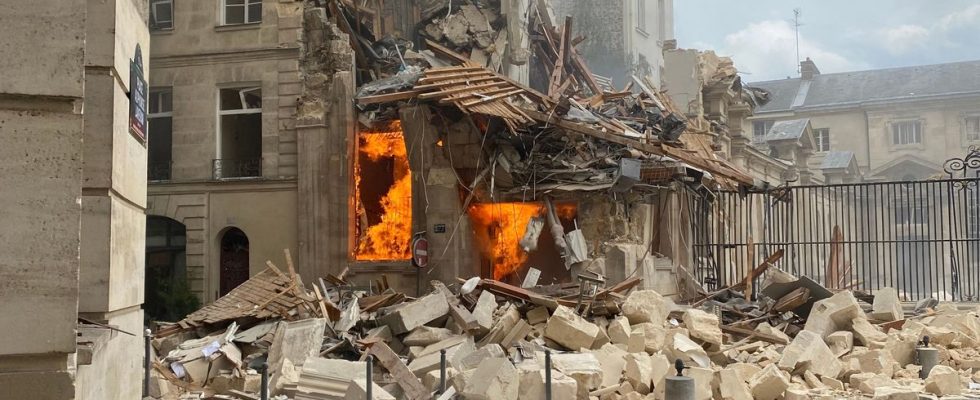The explosion of a building this Wednesday in the 5th arrondissement of Paris brings back painful memories for Parisians. If the last assessment communicated by the Public Prosecutor’s Office amounts to fifty injured, including six in absolute emergencies. Many immediately thought back to the 2019 rue de Trévise drama in which four people, including two firefighters, lost their lives.
Other dramas of the same type have taken place in recent years in the capital. Their common point: a gas explosion. If the investigation is underway to determine with certainty the origin of the explosion in rue Saint-Jacques, all the numerous testimonies collected on the spot report a strong smell of gas. Elements supported by the words of the Paris prosecutor, Laure Beccuau, and the Minister of the Interior, Gérald Darmanin, who both argued that this track was the most likely.
1,921 kilometers of gas network
With nearly 500,000 households connected gas in the capital, or 35% of the energy supplied, should we fear other tragedies of this type? Is the gas network of the City of Paris in question?
According to some, the dilapidated state of the capital’s facilities could be singled out. This was the opinion of Alexandre Vesperini, a member of the higher gas control commission, an organization responsible for checking the state of the network in the capital, at the time of the tragedy in rue de Trévise. He had confided At Parisianeven arguing that gas is “the number one problem in Paris” according to firefighters and the “dread of all district mayors”.
This outing had, at the time, aroused a reaction from GRDF, dealer in charge of the gas distribution networkwhich in a press release recalled that the network was subject to “permanent monitoring and rigorous control”, before specifying that this resulted in an investment of 50 million euros per year and 40 kilometers renewed each year, out of the 1,921 kilometers that make up the network.
New more flexible hoses
If the Paris Fire Brigade, contacted by 20 minutes, refused to comment on this subject, a borough mayor agreed to answer us and is not so categorical. Jean-Pierre Lecoq, mayor of the 6th arrondissement of Paris, has been interested in the question for more than fifteen years: “The old pipes are made of bituminized sheet metal. Over time, they are subject to wear and can break. Hence the appearance of gas pockets. “Rare but unfortunately formidable” events.
These old pipes are replaced by new ones, “rubber”, “more flexible” and which adapt better to the gas because they are “deformable”, specifies Jean-Pierre Lecoq who ensures that 95% of the network of his district now equipped with it.
Private piping neglected?
If we do not know the share of this new equipment in the Parisian network, the mayor of the 6th arrondissement points to another reason for concern, which is not directly part of this network: “private” piping. “Once it has arrived at the foot of the buildings, the gas ends up in the risers, which are the responsibility of the owners, condominiums or trustees. »
This is commonly referred to as the “ parisian end “, an exception in the capital, where GRDF is usually responsible for the network up to the shut-off valve of the private meter. According to the energy mediator, this “Parisian end”, depending on the buildings, can be around ten centimeters but in some cases extend over ten meters. “That’s often where it can go wrong,” explains Jean-Pierre Lecoq. Indeed, depending on the interest of the owners or the trustees of co-ownerships, these parts can sometimes be neglected.
If the owners are responsible for it, they do not have the right to touch it, and must contact the network manager to maintain it or have it renewed. This has often caused legal misunderstandings according to the Energy Ombudsman.
An elected official asks for more transparency from GRDF
Fortunately, a legislative reform, enacted by the “3DS” law of February 21, 2022, will put an end to this imbroglio to automatically transfer the responsibility for these columns and “Parisian ends” to GRDF no later than July 1, 2023, if this transfer does not is not requested upstream by the condominiums. A reform which should limit the level of negligence of the installations in the buildings of the capital.
“I believe that it is now essential for the manager to communicate on the state of the network, comments Jean-Pierre Lecoq, GRDF owes more transparency to Parisians. Not to scare, but on the contrary, to show that change is progressing and that everyone is aware of what is actually happening. » Contacted by 20 minutesthe City of Paris and GRDF did not respond to our requests.

